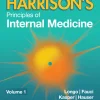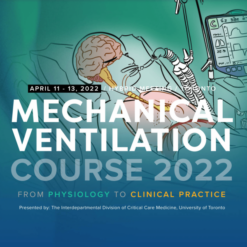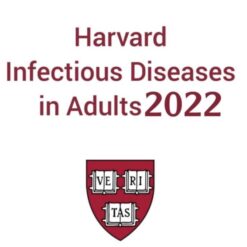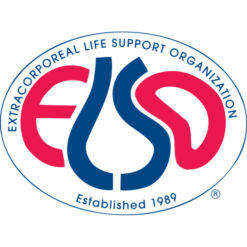-
×
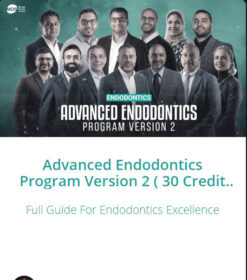 Advanced Endodontics Program Version 2 ( 30 Credit Hours ) (Course)
1 × $10.00
Advanced Endodontics Program Version 2 ( 30 Credit Hours ) (Course)
1 × $10.00 -
×
 PANCE/PANRE PRECISION – PA Board Review Live Webinar – Misenheimer April 2024 (Videos + Audios + Slides)
1 × $130.00
PANCE/PANRE PRECISION – PA Board Review Live Webinar – Misenheimer April 2024 (Videos + Audios + Slides)
1 × $130.00 -
×
 UCSF CME: Controversies in Women’s Health 2022
1 × $30.00
UCSF CME: Controversies in Women’s Health 2022
1 × $30.00 -
×
 Kaplan Preclinical Pathology Review 2023 For USMLE Step 1 (High Quality Image PDF)
1 × $8.00
Kaplan Preclinical Pathology Review 2023 For USMLE Step 1 (High Quality Image PDF)
1 × $8.00 -
×
 Applied Anatomy of the Face for Filler and Botulinum Toxin Injection
1 × $25.00
Applied Anatomy of the Face for Filler and Botulinum Toxin Injection
1 × $25.00 -
×
 University of Miami Neurology Update and Stroke Intensive Review 2024
1 × $75.00
University of Miami Neurology Update and Stroke Intensive Review 2024
1 × $75.00 -
×
 Mind Maps of Clinical Research Basics
1 × $15.00
Mind Maps of Clinical Research Basics
1 × $15.00 -
×
 Comprehensive Pharmacy Review for NAPLEX: Practice Exams, Cases, and Test Prep Eighth Edition
1 × $85.55
Comprehensive Pharmacy Review for NAPLEX: Practice Exams, Cases, and Test Prep Eighth Edition
1 × $85.55 -
×
 Fundamentals of HIV Medicine 2021: CME Edition
1 × $10.00
Fundamentals of HIV Medicine 2021: CME Edition
1 × $10.00 -
×
 Intraoral Scanning, Software, 3D Printing, and Milling
1 × $65.00
Intraoral Scanning, Software, 3D Printing, and Milling
1 × $65.00 -
×
 The Passmachine Addiction psychiatry Board Review Course 2021 videos interactive +Qbank PDFs
1 × $65.00
The Passmachine Addiction psychiatry Board Review Course 2021 videos interactive +Qbank PDFs
1 × $65.00 -
×
 The Washington Manual of Medical Therapeutics, 37th Edition (EPUB3)
1 × $12.00
The Washington Manual of Medical Therapeutics, 37th Edition (EPUB3)
1 × $12.00 -
×
 Kaplan Preclinical Immunology and Microbiology Review 2023 For USMLE Step 1 (High Quality Image PDF)
1 × $10.00
Kaplan Preclinical Immunology and Microbiology Review 2023 For USMLE Step 1 (High Quality Image PDF)
1 × $10.00 -
×
 Preclinical Medicine Complete 7-Book Subject Review 2023 Lecture Notes for USMLE Step 1 and COMLEX-USA Level 1 ( USMLE Prep )
1 × $30.00
Preclinical Medicine Complete 7-Book Subject Review 2023 Lecture Notes for USMLE Step 1 and COMLEX-USA Level 1 ( USMLE Prep )
1 × $30.00 -
×
 2017-2019 Live Surgery With Enrico Robotti MD Open Rhinoplasty Course
1 × $120.00
2017-2019 Live Surgery With Enrico Robotti MD Open Rhinoplasty Course
1 × $120.00 -
×
 Atlas of Botulinum Toxin Injection, Dosage, Localization, Application, 3rd Edition
1 × $20.00
Atlas of Botulinum Toxin Injection, Dosage, Localization, Application, 3rd Edition
1 × $20.00 -
×
 Zuccelli Masterclass: Periodontal and Peri-implant Plastic Surgery
1 × $49.00
Zuccelli Masterclass: Periodontal and Peri-implant Plastic Surgery
1 × $49.00 -
×
 Osteocom Single Flap Approach
1 × $50.00
Osteocom Single Flap Approach
1 × $50.00 -
×
 Critical Care: Board and Certification Review, 2022 Edition (AZW3 + EPUB + Converted PDF
1 × $10.00
Critical Care: Board and Certification Review, 2022 Edition (AZW3 + EPUB + Converted PDF
1 × $10.00 -
×
 Addiction Medicine for Non-Specialists 2023
1 × $135.00
Addiction Medicine for Non-Specialists 2023
1 × $135.00
Cleveland Clinic Heart Failure Summit Expanding the Frontiers of Contemporary Team Management 2025
$60.00
This Product is shared via google drive download link, So please share your correct Gmail id while placing the order .Please note that there are no CME points or certificate associated with this course Samples for Courses Can be found here : Free Samples Here!
Include: 7 videos + 38 pdfs, size: 2.21 GB
Categories: Cardiology, Internal Medicine
Tags: CARDIOLOGY, Internal Medicine
Cleveland Clinic Heart Failure Summit Expanding the Frontiers of Contemporary Team Management 2025
Include: 7 videos + 38 pdfs, size: 2.21 GB
Target Audience: cardiologists, internists, primary care physicians
Information:
This course provides comprehensive training for healthcare professionals in the advanced management of heart failure. The curriculum is designed to equip participants with the latest knowledge and skills necessary to optimize patient outcomes through innovative therapeutic strategies and interventions.
After completing this course, participants will be able to
- Apply appropriate strategies to optimize use of current and novel drug therapy of heart failure with reduced left ventricular ejection fraction
- Describe how to utilize medical devices and surgical therapies in the care of heart failure patients
- Discuss the clinical profile of heart failure and differentiate between reduced and preserved ejection fraction patients
- Discuss the latest findings concerning pharmacological approaches to heart failure with midrange or preserved ejection fraction
- Employ current therapeutic strategies for cardiac amyloid and hypertrophic cardiomyopathy
- Identify options for electrophysiological interventions to address risk of sudden death and atrial arrhythmias in patients with heart failure
Who Should Attend?
The course is directed to physicians, physician assistants, pharmacists, nurse practitioners, nurses, and all healthcare providers with an interest in treating and managing patients with heart failure.
Topics:
- Agenda.pdf
June 6 Advanced evaluation of the breathless patient.pdf
June 6 AF ablation and the pulsed field era.pdf
June 6 Arrhythmogenic cardiomyopathies and genetic testing.pdf
June 6 Breakthroughs in obesity-related HFpEF.pdf
June 6 Cardiac contractility modulation.pdf
June 6 Current and emerging device-based therapies for HFpEF.pdf
June 6 Educating and engaging the patient of tomorrow.pdf
June 6 GDMT optimization across the inpatient-outpatient domain.pdf
June 6 Harnessing tech for GDMT optimization and readmission reduction.pdf
June 6 Harnessing the heart team for GDMT equity.pdf
June 6 HF STATS The changing face of heart failure.pdf
June 6 Lessons learnt for diverse HF trial recruitment.pdf
June 6 New insights into HFpEF mechanisms.pdf
June 6 Novel therapies for cardiomyopathies.pdf
June 6 Remote monitoring in the “AI era”- Leveraging new devices and algorithms.pdf
June 6 Remote monitoring the “old school” way- Weights, vitals and symptoms.pdf
June 6 Session 1 – Updates in HF Epidemiology and Population Health.mp4
June 6 Session 2 – HFrEF and EP Innovations.mp4
June 6 Session 3 – HFpEF and Pulmonary Hypertension.mp4
June 6 Session 4A – Meet the Clinical Trialists (Concurrent Session).mp4
June 6 The future of remote HF and EP monitoring.pdf
June 6 The LAA and controversies in anticoagulation.pdf
June 6 The next frontier- earlier diagnosis and treatment of HF.pdf
June 6 The next generation HFrEF therapies.pdf
June 6 Trials and tribulations in valvular interventions.pdf
June 6 Ventricular tachycardia in patients with HFrEF.pdf
June 6 What’s new in pulmonary hypertension.pdf
June 7 A positive PET scan- What comes next.pdf
June 7 Collapse to comeback- Improving outcomes after cardiac arrest.pdf
June 7 DanGer ahead- Seeking an evidence base for shock management.pdf
June 7 Evolutions in organ preservation and transportation.pdf
June 7 Fixing the flow- Revascularization for the high-risk patient.pdf
June 7 Getting shock right- Managing the right ventricle.pdf
June 7 HCM in the era of myosin inhibition.pdf
June 7 LVADs in a Transplant World.pdf
June 7 Managing MCS at a non-transplant center.pdf
June 7 Managing TTR cardiac amyloidosis in 2025.pdf
June 7 Multidisciplinary cardiac care during pregnancy.pdf
June 7 Post-heart transplant outcomes and management innovations.pdf
June 7 Session 1 – Cardiomyopathies (amyloid, HCM, Sarcoid) and HFrEF.mp4
June 7 Session 2 – MCS and TX.mp4
June 7 Session 3 – Cardiogenic shock and critical care.mp4
June 7 The next generation of LVADs and trials.pdf
June 7 Transplant and VAD options in congenital conditions.pdf
Related products
Critical Care \ Emergency medicine
$75.00

 PANCE/PANRE PRECISION – PA Board Review Live Webinar – Misenheimer April 2024 (Videos + Audios + Slides)
PANCE/PANRE PRECISION – PA Board Review Live Webinar – Misenheimer April 2024 (Videos + Audios + Slides)  UCSF CME: Controversies in Women’s Health 2022
UCSF CME: Controversies in Women’s Health 2022 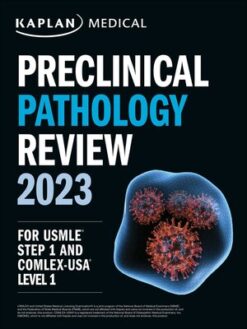 Kaplan Preclinical Pathology Review 2023 For USMLE Step 1 (High Quality Image PDF)
Kaplan Preclinical Pathology Review 2023 For USMLE Step 1 (High Quality Image PDF) 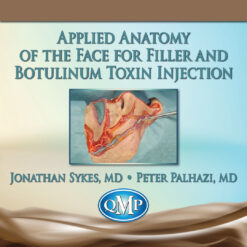 Applied Anatomy of the Face for Filler and Botulinum Toxin Injection
Applied Anatomy of the Face for Filler and Botulinum Toxin Injection 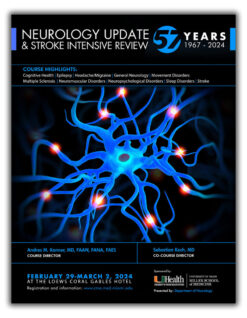 University of Miami Neurology Update and Stroke Intensive Review 2024
University of Miami Neurology Update and Stroke Intensive Review 2024  Mind Maps of Clinical Research Basics
Mind Maps of Clinical Research Basics 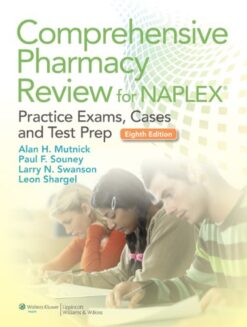 Comprehensive Pharmacy Review for NAPLEX: Practice Exams, Cases, and Test Prep Eighth Edition
Comprehensive Pharmacy Review for NAPLEX: Practice Exams, Cases, and Test Prep Eighth Edition 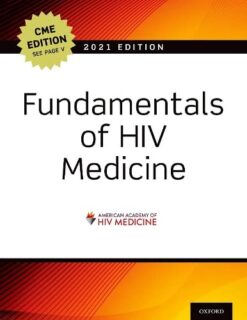 Fundamentals of HIV Medicine 2021: CME Edition
Fundamentals of HIV Medicine 2021: CME Edition  Intraoral Scanning, Software, 3D Printing, and Milling
Intraoral Scanning, Software, 3D Printing, and Milling  The Passmachine Addiction psychiatry Board Review Course 2021 videos interactive +Qbank PDFs
The Passmachine Addiction psychiatry Board Review Course 2021 videos interactive +Qbank PDFs 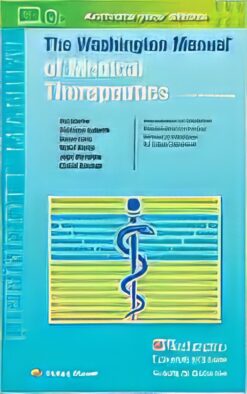 The Washington Manual of Medical Therapeutics, 37th Edition (EPUB3)
The Washington Manual of Medical Therapeutics, 37th Edition (EPUB3) 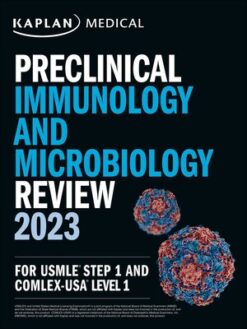 Kaplan Preclinical Immunology and Microbiology Review 2023 For USMLE Step 1 (High Quality Image PDF)
Kaplan Preclinical Immunology and Microbiology Review 2023 For USMLE Step 1 (High Quality Image PDF) 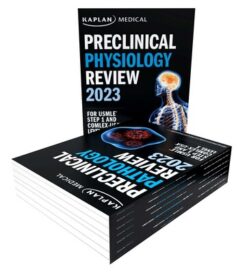 Preclinical Medicine Complete 7-Book Subject Review 2023 Lecture Notes for USMLE Step 1 and COMLEX-USA Level 1 ( USMLE Prep )
Preclinical Medicine Complete 7-Book Subject Review 2023 Lecture Notes for USMLE Step 1 and COMLEX-USA Level 1 ( USMLE Prep )  2017-2019 Live Surgery With Enrico Robotti MD Open Rhinoplasty Course
2017-2019 Live Surgery With Enrico Robotti MD Open Rhinoplasty Course  Atlas of Botulinum Toxin Injection, Dosage, Localization, Application, 3rd Edition
Atlas of Botulinum Toxin Injection, Dosage, Localization, Application, 3rd Edition  Zuccelli Masterclass: Periodontal and Peri-implant Plastic Surgery
Zuccelli Masterclass: Periodontal and Peri-implant Plastic Surgery 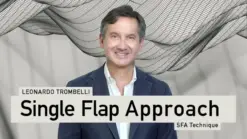 Osteocom Single Flap Approach
Osteocom Single Flap Approach 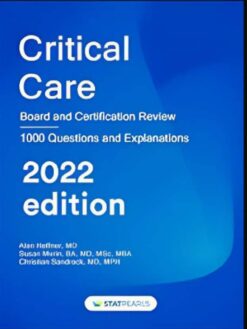 Critical Care: Board and Certification Review, 2022 Edition (AZW3 + EPUB + Converted PDF
Critical Care: Board and Certification Review, 2022 Edition (AZW3 + EPUB + Converted PDF 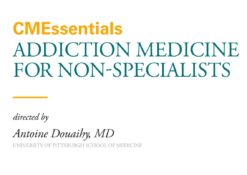 Addiction Medicine for Non-Specialists 2023
Addiction Medicine for Non-Specialists 2023 
